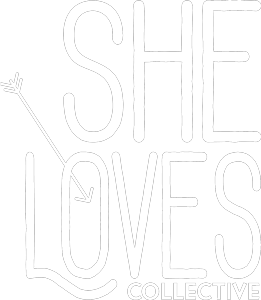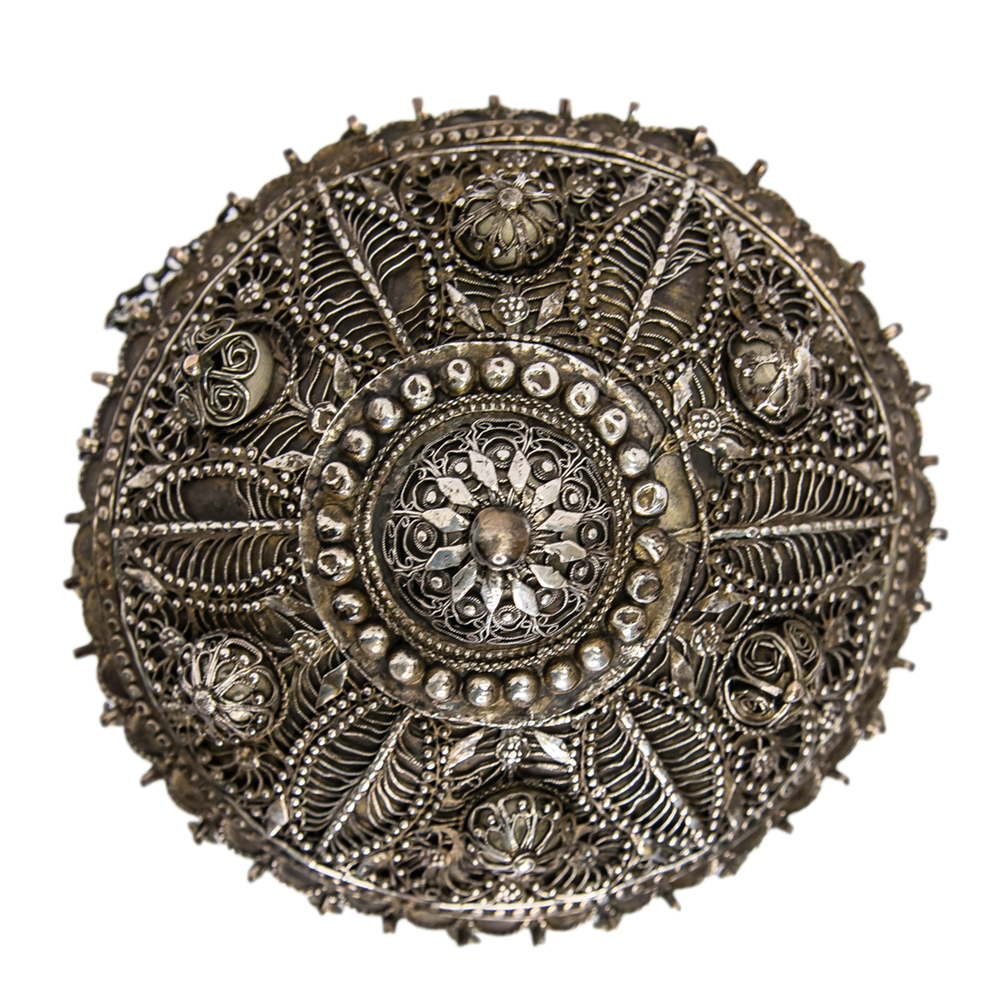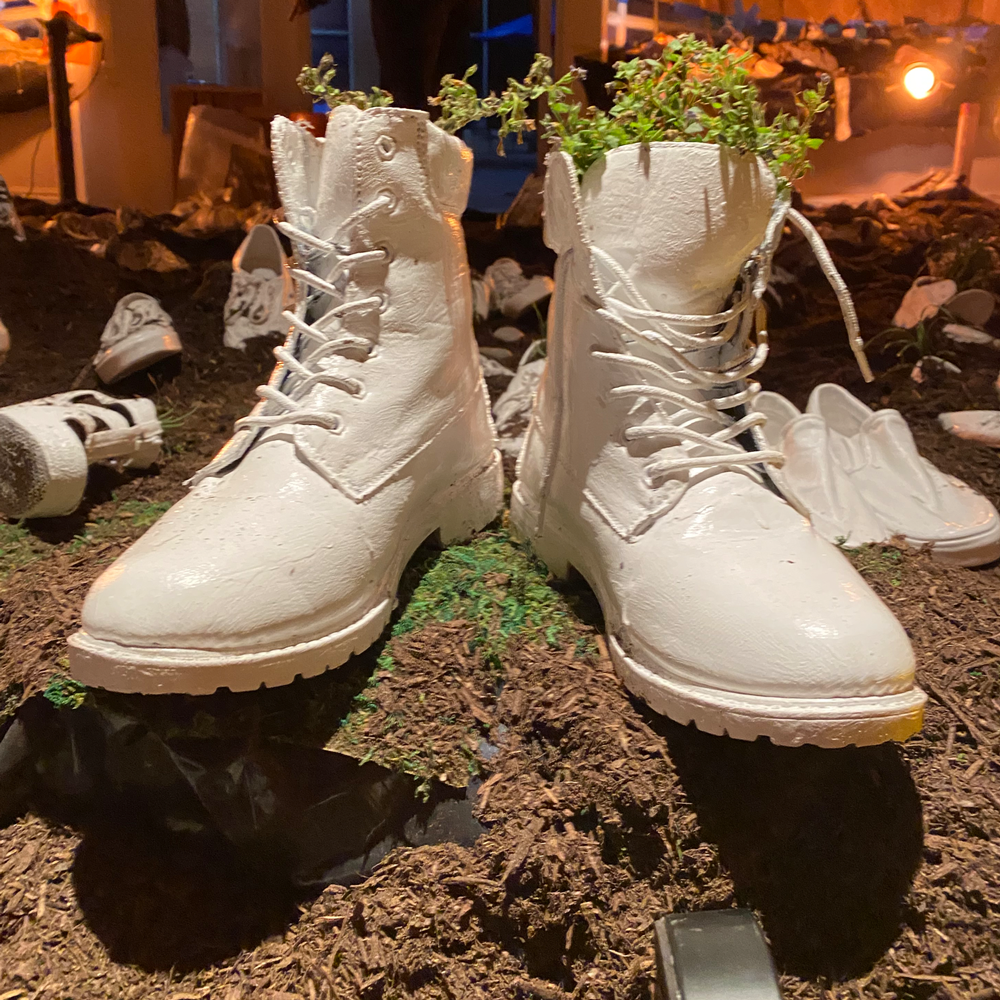Breaking Bread
MY RELIC is a contemporary view on the Armenian culture, the trials and tribulations of the Armenian people, their ability to survive and thrive amongst adversaries- through the lens of Armenian female artists.
Each of the three pop- up exhibits explores the ability to heal, move forward, and grow through a variety of themes broadly construed as “relics”. Translating this concept from the lexicon of the sacred and historical, relics are also non-static objects, ever-living, that narrate and construct our subjectivities anew. In each installation relics are considered through the concept of breaking bread, the collection of items passed down through generations, and salvation.
She Loves Collective dedicates this work to the Armenian people of Artsakh- in honor of the soldiers who lost their lives, the families who lost their homes and right to exist on their ancestral homelands, and over 100 prisoners of war held captive by Azerbaijan today.
We are with you. You are in our heart.
Breaking Bread features a traditional Armenian home sculpted out of lavash– a soft, thin flatbread recognized by The United Nations Education, Scientific and Cultural Organization (UNESCO) having originated from Armenia. Ancient Armenians sprinkled salt as a custom to cleanse a person or a home from evil spirits, here the outline of an Armenian rug with traditional motifs invites you in.
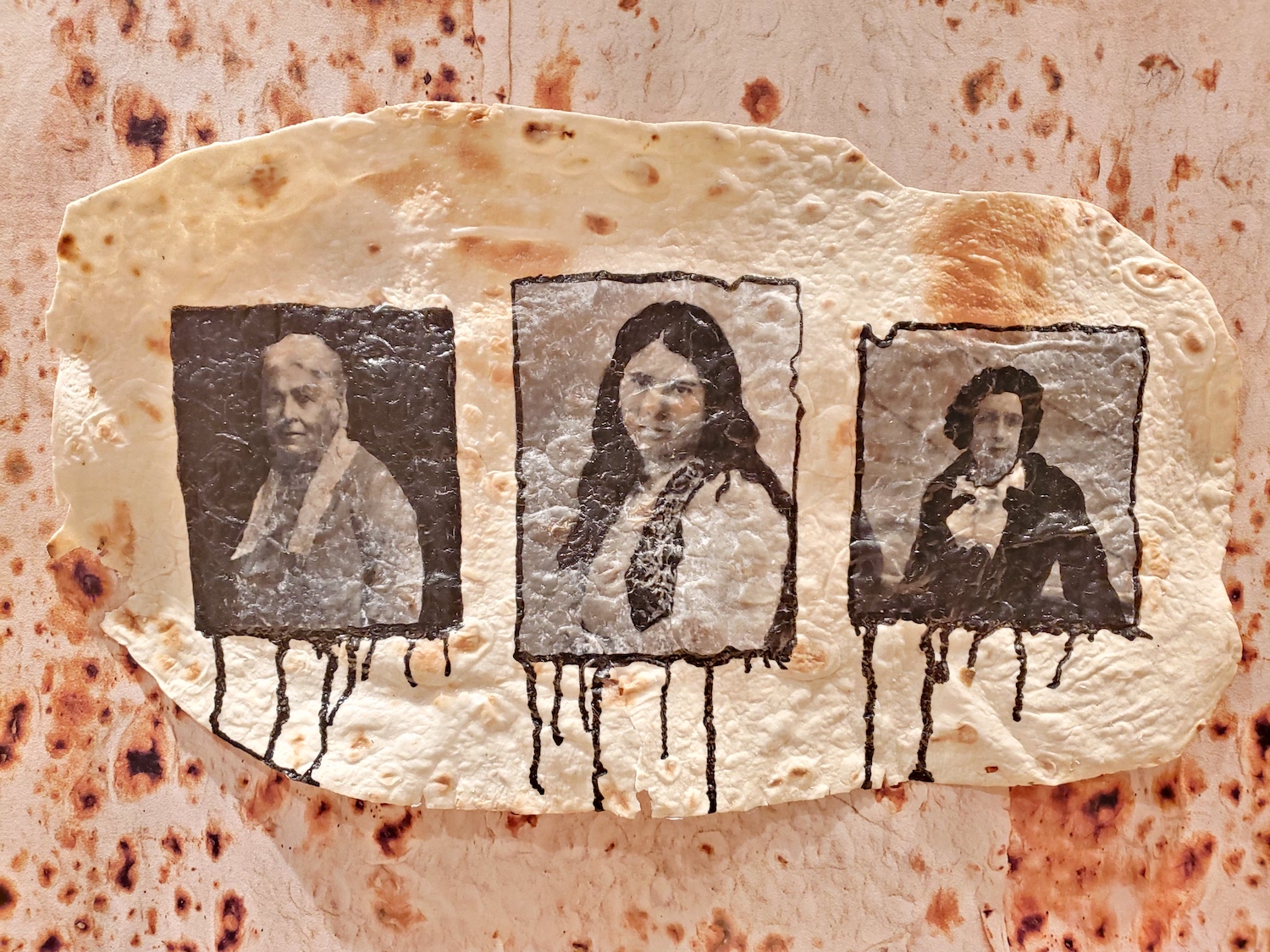
Usually prepared by women who sit on their knees before a hot oven to knead and roll out dough, lavash is made by sticking the unleavened dough to the inner walls of a vertical clay oven set in the ground. As a traditional staple of sustenance in Armenian culture, lavash typically represents nutrition and life, and can be used in a variety of ways in the kitchen. Yet, while lavash is made to be ingested, an item taken for granted as it disappears and becomes forgotten during the process of digestion, here, the staple food that has nourished, maintained and constituted Armenian bodies throughout the centuries remains externalized and used to structure the contents of a room.
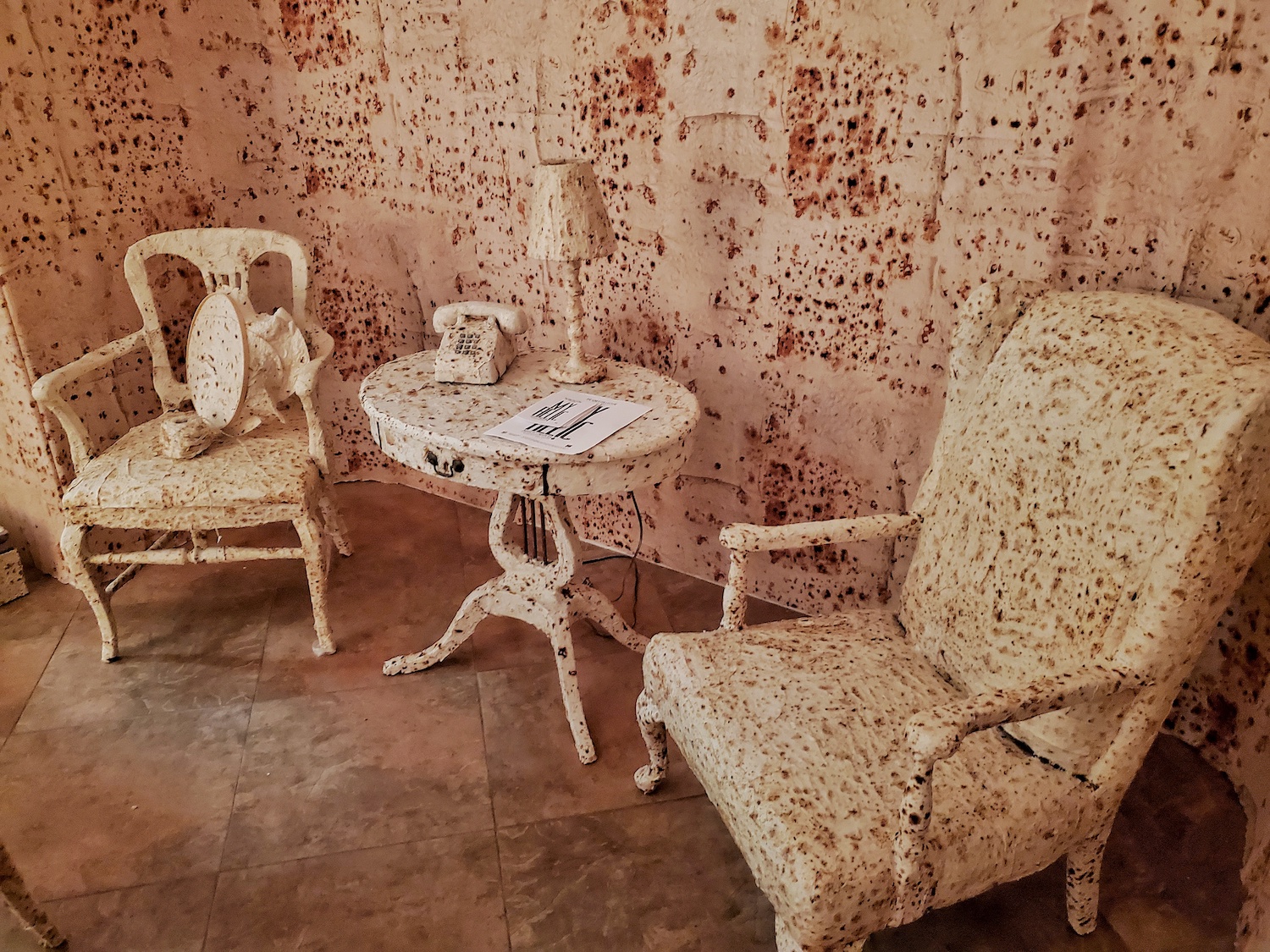
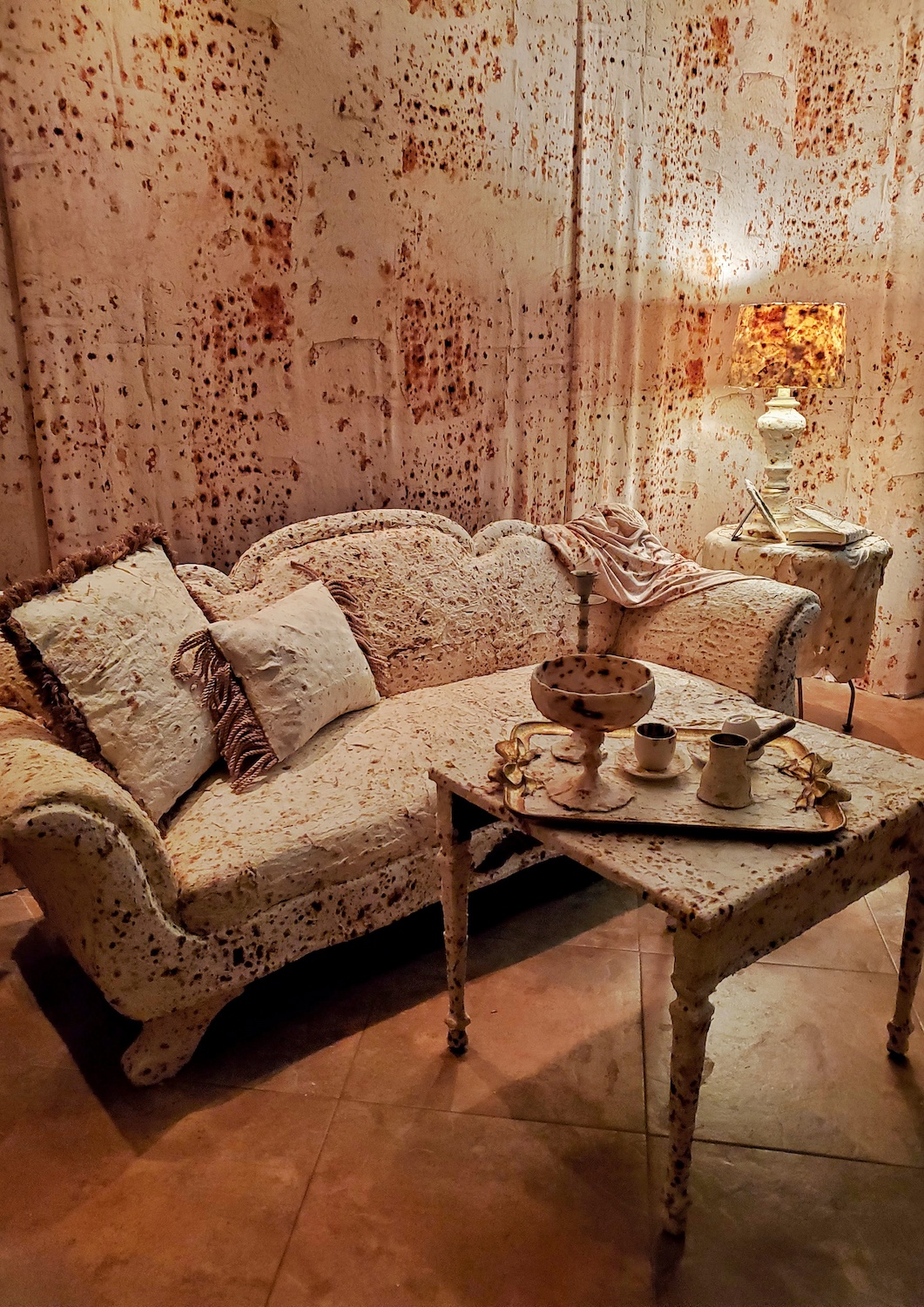
Breaking Bread mirrors a room that has been lost or abandoned, has been or could be inhabited. Lavash cloaks the outer forms of an intimate and communal living space with what has been digested for decades: the wounds inflicted upon Armenians, generation after generation. A room constructed by women, unsettles the continuous narrative of victimhood that has been internalized for centuries, peaking in genocide. In a room splattered with lavash—white and brown like the blotched skin of someone bruised or burnt, baked and built by the brow of women—lavash is spit back; it is regurgitated, vomited onto the objects and spaces that have housed and entrapped Armenians since the 1915 genocide carried out by the Ottoman Empire and the continued efforts by Turkey and Azerbaijan to rid Armenians of their ancestral homelands. Lands Armenians have existed on since for 3500 years.
If this lavash were eaten, what would it taste like? Would the room disappear? Does the room exist only because the lavash keeps it together? Now that we have been disemboweled of what has nourished us for centuries, the process of its ingestion, disappearance and forgetting halted, might this give us pause to reflect upon how we internalize and comfort ourselves by laying upon our own wounds? Or, like burnt skin before it heals, should we begin to peel back the layers, painful as it may be, in order to make room for new life, new lavash?
MEDIUM
~ 90 pounds of Lavash, glue, water, recycled/donated furniture and home goods, mixed media.
Video documentation provided by Ara Zada / The Lavash Book.
